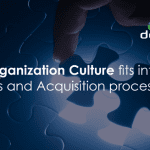How to see your cultural integration through to completion
In the early stages of a merger or acquisition, leaders devote a lot of attention to building an understanding of the separate cultures: what similarities they share, and what their unique differences may be. In the Ongoing Integration phase, leaders begin to make crucial decisions about which practices, values, habits, and routines to bring forward.
The ultimate goal of almost any merger or acquisition is to create a unified organization as a result of the combined cultures coming together. Exactly what form that combination takes may vary so long as a high-performance culture results. However, during the ongoing integration phase, clear communication from leadership plays a crucial role.
Make decisions with an eye toward the cultural future of the organization
In those first six-months to one year of integration activity, leaders make a lot of decisions which, if done thoughtfully, can have a huge positive impact. These decisions range from roles in the organization, who stays in what position, and if some people leave. They can be about about compensation, rewards, and recognition. They involve aligning behavioral systems, financial systems, and IT systems. Sometimes, where products or services overlap, they have to decide which move forward which to sunset.
Given all the key factors involved, both internally and externally, leaders must make these decisions with an understanding of the type of culture they want to form. The more thoughtfully these decisions can be made, the more they can help link them, and the rationale behind them, back to the type of culture and environment they wish to create in the organization.
How does ongoing integration affect the workforce?
As leaders move their decisions into implementation, plans, intentions, and expectations have to be translated into reality. It’s a time when there’s a lot of anxiety in organization, because it can take a longer period of time and involves a great deal of vulnerability for both the workforce and the organization.
Employees want to know two main things: why did this make sense, and how does it affect me? Sometimes, depending on how public about an upcoming merger the organizations can be, employees don’t even know until very close to the final stages. They want to understand the rationale, and they want to hear what the vision and strategy will be for the organization going forward.
But they also have some very near and dear questions that they will want to see answered. Leaders need bounce between the large, big-picture vision of why this is important for the organization, and the close-up view of how this is going to impact employees on a personal level.
We will cover how leaders can handle internal and external challenges to the ongoing integration process is future posts. Stay tuned: there’s more to follow!
This post is part of our ongoing series on Mergers and Acquisitions. Read our previous posts here:
Part I: Cultural Due Diligence
Part II: Transition Planning and Team Alignment
Part III: Integration from Day 1






